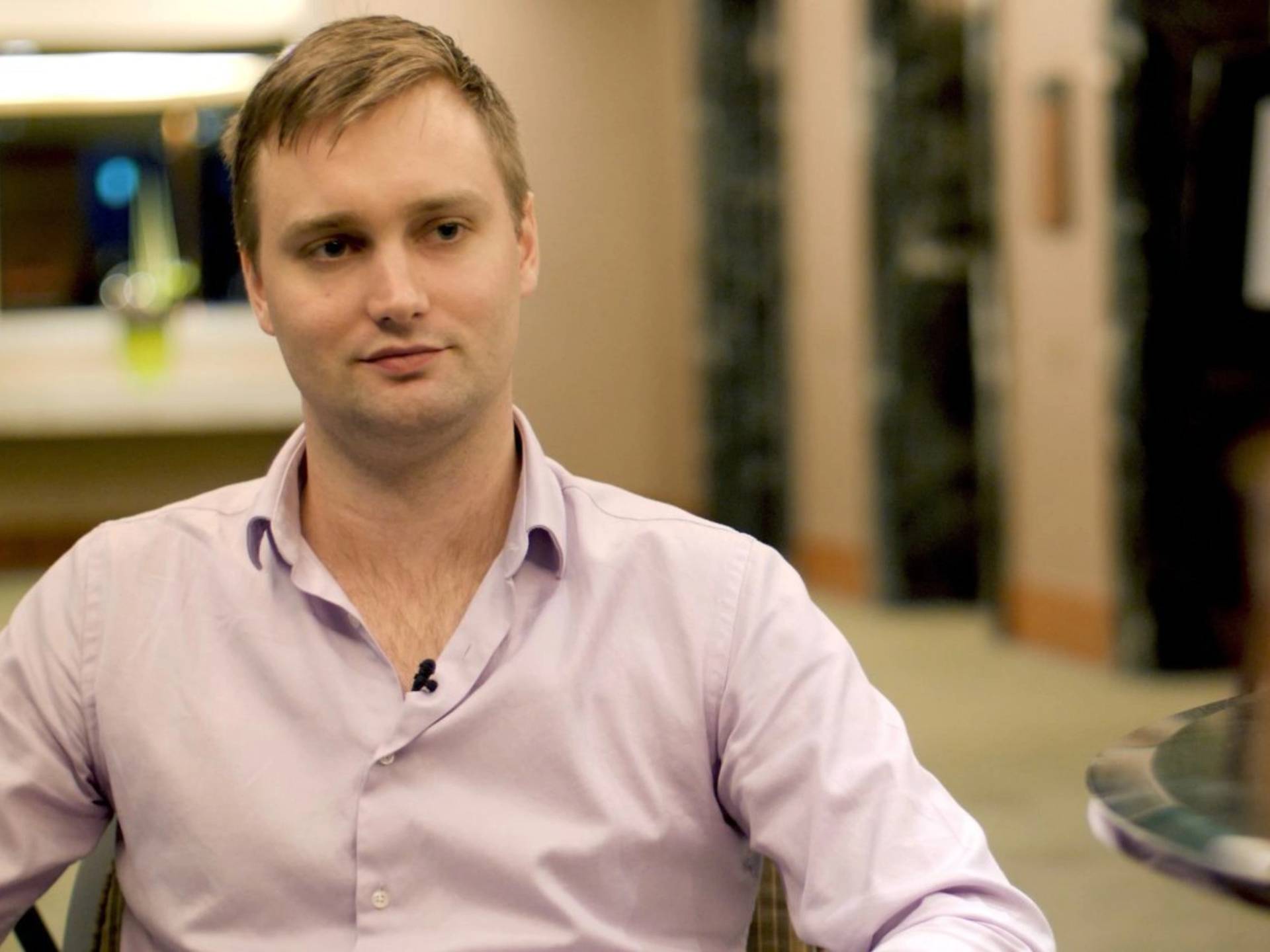위키 구독하기
Share wiki
Bookmark
Rune Christensen
Rune Christensen
**룬 크리스텐센(Rune Christensen)**은 메이커다오(MakerDAO)의 최고경영자(CEO)이자 공동 창립자입니다. 메이커다오(MakerDAO)는 시장 역학에 대응하도록 설계된 스마트 계약 시스템을 통해 변동성을 제거하는 이더리움(Ethereum) 블록체인 상의 세계 최초 스테이블코인인 다이(Dai) 발행으로 유명합니다. [1]
어린 시절 & 교육
크리스텐센은 덴마크에서 태어났습니다. 그는 2011년부터 2013년까지 코펜하겐 비즈니스 스쿨(Copenhagen Business School)에서 국제 비즈니스를 전공했습니다. 또한 2013년부터 2014년까지 코펜하겐 대학교(University of Copenhagen)에서 생화학을 공부했습니다. 그는 한때 중국에 거주하며 국제 채용 서비스를 제공하는 회사인 트라이 차이나(Try China)를 공동 창립했습니다. [1]
경력
암호화폐 업계에 참여하기 전, 크리스텐센은 2011년부터 2014년까지 서구 국가 출신 영어 교사를 중국에 파견하는 사업을 운영했습니다. 2011년 그는 비트코인을 알게 되었고, 이후 기존 사업을 매각하여 암호화폐에 투자하기로 결정했습니다. 그러나 2014년 Mt.Gox 해킹 및 붕괴 사건 이후, 크리스텐센은 스테이블코인 개념에 관심을 갖게 되었습니다. [2]
메이커다오(MakerDAO)
2015년 크리스텐센은 전 세계 개인에게 투명성과 포용성을 향상시키는 금융 시스템을 구축하는 목표로 메이커다오(MakerDAO)를 출시했습니다.[2][5]
저는 어릴 적에 많은 스타트업을 시도했고, 아시아에서 오랜 시간 일하다가 블록체인 기술을 발견하고 처음으로 비트코인에 관심을 갖게 되었습니다. 2011년/2012년경에는 진정한 비트코인 매니아가 되었죠. 하지만 시간이 지나면서 비트코인의 변동성 때문에 다소 실망했습니다. 사람들이 처음 예상했던 것처럼 주류 채택이 이루어지지 않았기 때문입니다. 그리고 그 이유는 변동성 때문이라고 생각합니다. 비트코인은 일반 통화라기보다는 금에 가깝습니다. 그래서 스테이블코인에 관심을 갖게 되었고, 최초의 탈중앙화 스테이블코인 프로젝트였던 BitShares를 발견했습니다. [5]
BitShares 프로젝트의 활동적인 커뮤니티 회원이었지만, 크리스텐센은 개발에는 적극적으로 참여하지 않았습니다. 프로젝트 커뮤니티에서의 활동은 메이커다오(MakerDAO) 개발의 기초를 형성하는 중요한 아이디어를 얻는 데 도움이 되었습니다. [5]
저는 매우 활동적인 커뮤니티 회원이었고, 메이커다오(MakerDAO)의 기본적인 아이디어 중 많은 부분이 BitShares의 아이디어에서 직접 나왔습니다. 특히, 공식 개발자가 아닌 일반 커뮤니티 회원이 프로젝트의 거버넌스 핵심에 깊이 관여할 수 있다는 점이 블록체인 기술과 기업의 강점입니다. [5]
2019년 메이커다오(MakerDAO)는 지식이 풍부하고 네트워크가 잘 갖춰진 파트너와의 제휴를 통해 강력한 입지를 구축하는 데 중점을 두고 아시아 시장으로의 확장 계획을 발표했습니다. 크리스텐센은 중국이 블록체인 업계의 주요 플레이어이기 때문에 이를 메이커(Maker) 프로젝트의 중요한 단계로 여겼습니다. [4]
“미국을 제외하고 거래량이나 실제 생활에서 블록체인으로 가능한 새로운 기술을 채택하고 사용하는 측면에서 암호화폐 공간 전체를 운영하는 국가는 바로 중국입니다. 이는 비트코인 초기부터 알려진 사실이며, 비트코인은 중국에서 인기를 얻기 시작하면서야 정말로 커졌습니다. 관심이 갑자기 폭발적으로 증가했습니다. 이것이 아시아에서 기술이 채택되는 방식이며, 서구에서는 일반적으로 더 유기적인 성장이 일어납니다.”
- 룬 크리스텐센[3]
2022년 크리스텐센은 자신의 역할에서 물러나 메이커다오(MakerDAO)를 탈중앙화로 전환하려고 시도했습니다. 그러나 이러한 조치는 권력 공백을 초래하고 커뮤니티 내 분열을 야기했습니다. 이후 크리스텐센은 메이커다오(MakerDAO)의 진정한 탈중앙화 달성을 목표로 하는 엔드게임(Endgame)이라는 계획에 다시 참여했습니다. 이 계획에는 기존 부서의 구조 조정과 메이커다오(MakerDAO) 내 미니 DAO 도입이 포함되었습니다. 목표는 관료적 절차를 간소화하고 장기적인 지속 가능한 성장을 촉진하는 것이었습니다. [3]
솔라나 포크 제안
2023년 9월 1일, 룬 크리스텐센은 메이커의 “엔드게임(Endgame)” 전략의 최종 단계에 솔라나(Solana) 코드베이스의 포크를 사용할 것을 제안했습니다. 뉴체인(NewChain)이라는 코드명의 이 단계는 독립적인 블록체인에 전체 메이커 프로토콜을 재구축하는 것을 목표로 합니다. [6]
트윗과 함께 게시된 블로그 게시물에서 크리스텐센은 솔라나(Solana)의 코드베이스를 뉴체인(NewChain)의 기반으로 고려해야 한다고 밝혔습니다. [7]
"엔드게임(Endgame)의 마지막 단계는 뉴체인(NewChain)이라는 코드명의 메이커용 네이티브 블록체인 출시입니다. 이를 통해 생태계를 더욱 안전하고 효율적으로 만들 것입니다. 조사 결과, 솔라나(Solana) 코드베이스를 뉴체인(NewChain)의 기반으로 고려해야 한다고 생각합니다." [7]
그는 이 선택에 대한 세 가지 주요 이유로 기술적 품질, 복원력, 성공적인 포크를 강조했습니다. [6]
잘못된 내용이 있나요?
